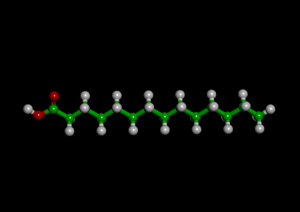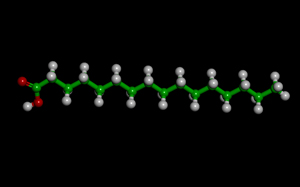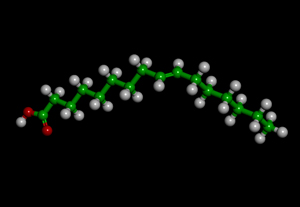Myristic, Palmitic and Palmitoleic fatty acids found to increase size of Python Heart
Identification of three fatty acids involved in the extreme growth of Burmese pythons' hearts following large meals could prove beneficial in treating diseased human hearts... The expanded python heart appears remarkably similar to the larger-than-normal hearts of Olympic-caliber athletes.
- Date:
- October 27, 2011
- Source:
- University of Alabama in Tuscaloosa
Growth of the human heart can be beneficial when resulting from exercise – a type of growth known as physiological cardiac hypertrophy – but damaging when triggered by disease – growth known as pathological hypertrophy. The new research shows a potential avenue by which to make the unhealthy heart growth more like the healthy version.The research, conducted in collaboration with multiple researchers at the University of Colorado working in the lab of Dr. Leslie Leinwand, identified three fatty acids, myristic acid, palmitic acid and palmitoleic acid, for their roles in the snakes' healthy heart growths following a meal.
Researchers took these fatty acids from feasting pythons and infused them into fasting pythons. Afterward, those fasting pythons underwent heart-rate growths similar to that of the feasting pythons. In a similar fashion, the researchers were able to induce comparable heart-rate growths in rats, indicating that the fatty acids have a similar effect on the mammalian heart . The paper, whose lead author was Dr. Cecilia Riquelme of the University of Colorado, also showed that the pythons' heart growth was a result of the individual heart cells growing in size, rather than multiplying in number.
By studying gene expression in the python hearts – which genes are turned on following feasting – the research, Secor said, shows that the changes the pythons' hearts undergo is more like the positive changes seen in a marathon runner rather than the types of changes seen in a diseased, or genetically altered, heart.
"Cyclists, marathon runners, rowers, swimmers, they tend to have larger hearts," Secor said. "It's the heart working harder to move blood through it. The term is 'volume overload,' in reference to more blood being pumped to tissues. In response, the heart's chambers get larger, and more blood is pushed out with every contraction, resulting in increased cardiac performance." However, the time-frame of this increased heart performance of a python blows away even the most physically-fit distance runner, Secor said. "Instead of experiencing elevated cardiac performance for several hours with running, the Burmese python is maintaining heightened cardiac output for five to six days, non-stop, while digesting their large meal."
Another interesting finding of the research, Secor said, is even with the increased volume of triglycerides circulating in the snakes after feeding, those lipids are not remaining within the snakes' hearts or vascular systems after the completion of digestion. "The python hearts are using the circulating lipids to fuel the increase in performance." Traditionally, mice have been the preferred animal model used to study the genetic heart disease known as hypertrophic cardiomyopathy, characterized by heart growth and contractile dysfunction. However, the snakes' unusual physiological responses render them more insightful models, in some cases, Secor said. Pythons are infrequent feeders, sometimes eating only once or twice a year in the wild. When they do eat, they undergo extreme physiologic and metabolic changes that include increases in the size of the heart, along with the liver, pancreas, small intestine and kidney. Three days after a feeding, a python's heart mass can increase by as much as 40% before reverting to its pre-meal size once digestion is complete, Secor says.

Myristic acid (above), also called tetradecanoic acid, is a common saturated fatty acid with the molecular formula CH3(CH2)12COOH.
Besides nutmeg, myristic acid is also found in palm kernel oil, coconut oil, butter fat and is a minor component of many other animal fats
 Palmitic acid (above) , also called hexadecanoic acid, is one of the most common saturated fatty acids found in animals and plants. It is a white solid that melts at 63.1°C and its chemical formula is CH3(CH2)14COOH. As its name tells us, it is found in palm oil but also in butter, cheese, milk and meat . Palmitic acid is the first fatty acid produced during lipogenesis and from which longer fatty acids can be produced.
Palmitic acid (above) , also called hexadecanoic acid, is one of the most common saturated fatty acids found in animals and plants. It is a white solid that melts at 63.1°C and its chemical formula is CH3(CH2)14COOH. As its name tells us, it is found in palm oil but also in butter, cheese, milk and meat . Palmitic acid is the first fatty acid produced during lipogenesis and from which longer fatty acids can be produced.

Palmitoleic acid, or (Z)-9-hexadecenoic acid, is an omega-7 monounsaturated fatty acid with the formula CH3(CH2)5CH=CH(CH2)7COOH that is a common constituent of the glycerides of human adipose tissue. It is present in all tissues, but generally found in higher concentrations in the liver . It is biosynthesized from palmitic acid by the action of the enzyme delta-9 desaturase.
Dietary sources of palmitoleic acid include a variety of animal oils, vegetable oils, and marine oils. Macadamia Nuts, Macadamia oil (Macadamia integrifolia) and sea buckthorn oil (Hippophae rhamnoides) are botanical sources with high concentrations, containing 17% and 40% of palmitoleic acid, respectively.
IMPLICATIONS OF STUDIES
“We may later be able to turn the tables, in a sense, in the processes involved in pathological hypertrophy by administering a combination of fatty acids that occur in very high concentrations in the blood of digesting pythons,” said Dr. Stephen Secor, associate professor of biological sciences at UA and one of the paper’s co-authors. “This could trigger, perhaps, something more akin to the physiological form of hypertrophy.”
Related Research in Endogenous Fatty Acids
Research is limited in the area of endogenous fatty acids e.g., myristic acid (14:0), palmitic acid (16:0), palmitoleic acid (16:1 n7), vaccenic acid (18:1 n7), stearic acid (18:0), oleic acid (18:1 n9), and a related fatty acid, cis-7 hexadecenoic acid (16:1 n9). Several fatty acids that are end products of fatty acid synthesis are associated with SCA (sudden cardiac arrest) risk. see Endogenous red blood cell membrane fatty acids and sudden cardiac arrest.
Palmitoleic acid may improve hyperglycemia and hypertriglyceridemia by increasing insulin sensitivity, in part owing to suppressing proinflammatory gene expressions and improving hepatic lipid metabolism in diabetic mice.
Clearly more research is needed in this area.
Original Source: University of Alabama
Pipeline Drugs
- Heart Disease
- Cancer
- Respiratory Disease
- Stroke
- Alzheimer's Disease
- Diabetes
- Pain Management
- Inflammation
- Anti-Aging Treatment
- Pipeline Medical Devices
- Investing in Pipeline Drug Companies
- Biotechnology Encyclopedia
- What are Breakthrough Therapies?
- What are Clinical Trials?
Healthy Molelcules